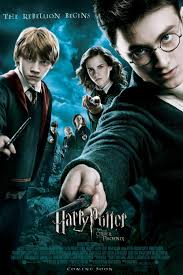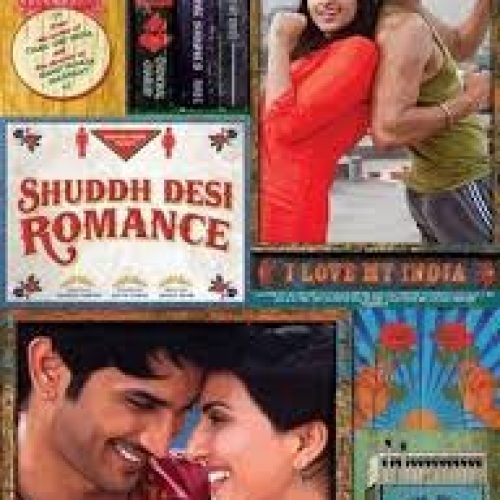The fifth installment of the magical journey brings with it a darker, more politically charged storyline that elevates the stakes in ways both expected and surprising. Harry Potter and the Order of the Phoenix (2007) stars Daniel Radcliffe, Rupert Grint, and Emma Watson, with key performances by Gary Oldman, Imelda Staunton, and Helena Bonham Carter. Set during Harry’s fifth year at Hogwarts, the film plunges into the growing battle between good and evil as Voldemort’s return remains under doubt by the Ministry of Magic. The time is contemporary, set in the familiar, increasingly oppressive atmosphere of Hogwarts, while the genre blends fantasy and adventure with a newfound psychological depth.
The plot kicks off as Harry returns to Hogwarts, but this time, he is battling not only the external threat of Voldemort but also the disbelief and outright opposition from the wizarding community. The Ministry of Magic, led by Cornelius Fudge, refuses to acknowledge Voldemort’s return, painting Harry and Dumbledore as delusional fear-mongers. At school, the Ministry sends Dolores Umbridge, a cruel and bureaucratic teacher, to impose strict control over the students, erasing all attempts to prepare them for the looming dangers. As tensions rise, Harry secretly forms “Dumbledore’s Army,” a group of students learning defensive magic in defiance of Umbridge’s rule. As the story unfolds, Harry also confronts haunting visions connected to Voldemort, which leads him into a climactic battle that holds great consequences for both him and the wizarding world.
One of the standout elements of the film is the character of Dolores Umbridge, played to chilling perfection by Imelda. Her portrayal of this smiling, pink-clad authoritarian figure is equal parts terrifying and grotesque. Despite the saccharine exterior, Umbridge’s sadistic and controlling tendencies slowly unravel, making her one of the most hated villains in the franchise. The way Imelda balances sweetness with malevolence is masterful, and her performance elevates the tension in every scene she’s in. Watching her implement increasingly restrictive and humiliating rules at Hogwarts feels as suffocating for the audience as it does for the characters. Her presence marks a sharp shift in tone, and she effectively becomes a symbol of blind, oppressive authority. Her performance underscores how power can be abused within systems, even in a magical world.
Direction by David Yates, in his first contribution to the series, is notably more mature and complex compared to the previous films. Yates takes the helm with a focus on creating an atmosphere of unease, paranoia, and growing rebellion. His decision to tone down the whimsical elements of earlier films in favor of a more oppressive visual language is evident in scenes such as Umbridge’s inspections of the classrooms, where the tension builds gradually and subtly. Yates emphasizes Harry’s psychological state, allowing for a deeper dive into Harry’s inner turmoil, loneliness, and anger as he feels increasingly isolated. The climactic battle at the Ministry of Magic is a prime example of Yates’ skill in orchestrating action scenes that are both visually thrilling and emotionally charged, leaving a lasting impact long after the scene is over.
Cinematography by Slawomir Idziak complements the mood of the film brilliantly. Gone are the bright hues and lively magical settings of previous films, replaced by a darker, more subdued palette. The Ministry of Magic’s sleek, eerie corridors and towering black marble structures are a perfect example of how the visual design contributes to the oppressive mood. The lighting in Harry’s nightmares and visions of Voldemort adds a disorienting, otherworldly quality, blurring the lines between reality and illusion. Idziak’s use of wide shots during the final battle scene also captures the immense scale and power of the duel between Dumbledore and Voldemort, making it one of the most visually breathtaking sequences in the entire series.
Musically, Nicholas Hooper takes over from John Williams, crafting a score that is more somber and reflective, fitting the darker themes. His use of strings and low brass creates a sense of foreboding throughout the film, particularly during the scenes involving Harry’s increasing connection to Voldemort. While Hooper introduces new motifs, he also retains some of the series’ classic themes, blending them seamlessly to maintain the continuity of the franchise’s sound. The music is less bombastic than in previous installments, but it works to underscore the more introspective and emotional journey Harry undergoes.
The visual effects in the film are top-notch, with the final battle in the Ministry of Magic showcasing some of the best work. The swirling orbs of fire and water in Dumbledore’s duel against Voldemort are not only a testament to the sheer magical power of the characters but also an exhilarating visual treat. The special effects also excel in subtler ways, such as the enchanting, yet ominous, magical fireworks Fred and George Weasley unleash on Umbridge during one of the film’s most satisfying moments of rebellion. The seamless blending of practical effects and CGI helps maintain the immersive quality of the wizarding world, allowing audiences to fully engage with the fantastical elements without distraction.
Editing by Mark Day is tight and efficient, especially given the film’s massive source material. The book is one of the longest in the series, yet Day and Yates manage to condense the story into a cohesive, well-paced narrative without sacrificing too much of the emotional weight. Some subplots, such as the romantic development between Harry and Cho, feel rushed, but overall, the film stays focused on the central themes of rebellion, isolation, and the cost of war. Day’s pacing keeps the film moving steadily toward its powerful climax, never letting the darker themes drag down the energy of the plot.
The costumes, particularly for Dolores Umbridge, deserve mention as well. Jany Temime, the costume designer, uses Umbridge’s pink, kitten-adorned outfits as a brilliant visual contrast to her cruel nature. The Hogwarts students’ attire, meanwhile, grows subtly darker and more worn, reflecting the increasingly dire circumstances they face. The costumes add another layer to the character development, visually representing the changes the characters are going through as they step into more mature, dangerous roles within the conflict.
Overall, Harry Potter and the Order of the Phoenix is a bold step forward for the franchise. It tackles heavier themes such as the abuse of power, the struggle for truth in the face of denial, and the painful process of growing up in the shadow of war. The film’s exploration of Harry’s mental and emotional struggles gives it a psychological depth that previous films only hinted at, making it a standout in the series. The performances, particularly from Imelda and Daniel, are superb, while Yates’ direction brings a newfound maturity and complexity to the wizarding world. Although some might miss the more lighthearted tone of the earlier films, this installment is a necessary shift, preparing the audience for the darker, more intense conflicts that lie ahead.
If you’re a fan of the Harry Potter series, this film is essential viewing, not just for its plot developments but for the way it deepens the emotional and thematic core of the story. It’s a film that lingers long after the credits roll, with its portrayal of resistance, unity, and the cost of standing up for what is right. Prepare for a gripping, emotional ride that sets the stage for the battles yet to come.







